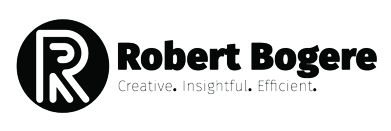Last Updated on Tue-Sep-2024 by Robert Bogere
In the modern business landscape, the fusion of brand strategy and business goals alignment is imperative for success.
Your brand is not just an image or a logo; it’s a dynamic force propelling your business toward its objectives.
The brand strategy serves as the intricate framework guiding how businesses present themselves in a crowded marketplace.
Picture this synergy: business goals as destinations and brand strategy as the roadmap. It shapes how your audience perceives and engages with your business.
This article delves into the ‘how’ and ‘why’ behind aligning your brand strategy with business goals, ensuring your brand not only exists but thrives with purpose.
What is brand strategy?
Brand strategy is a framework that determines how businesses present themselves to customers and stand out among competitors–Coursera.
In simple terms, it’s a type of marketing strategy that focuses on how your business presents its brand to consumers and positions itself within the marketplace.

The key factor is how you’ll position your brand in the marketplace. The important elements that’ll form the backbone of your brand strategy are:
- Mission statement
- Target audience
- Brand promise
- Brand values
- Brand personality
- Brand positioning
- Brand tone and voice
Discover: How you can develop your brand strategy to affect results
What are business goals?
According to Asana, business goals refer to predetermined targets that a business or individual plans to achieve in a set period. Split your goals into short-term and long-term.
That brings us to the last concept of brand value, which is the monetary worthiness of your brand if you were to sell it out – Qualtrics.

It’s the financial worthiness of your brand. If I ask any start-up and SME owner what’s their brand strategy? From experience, few will present a suitable case.
Why? As it’s easy to say, it’s not the same in practice. Without understanding the direction of your business, your brand cannot strategically help your business grow.
The lead and theme for anything your brand does. The what, where, how, why, and when your brand does them.
It’s difficult to develop a strong brand strategy without internal alignment with the business strategy.
How to align your brand strategy with your business goals.
When developing your company brand strategy, it’s advised to start at the top. Start with;
1. Check your business goals.
Your brand strategy should reflect and amplify your business goals, whether your target is market expansion, product launch, or improving your customer loyalty.

Identify your business goals. Before working on your brand strategy,
- What are your business goals?
- Market expansion?
- Improve customer experience?
- Launching a new product?
Every business goal has a different approach to branding. If your business goal is enhancing your customer experience?
Your brand strategy should target developing meaningful customer relationships. How? That’s now rubber meets the tough.
2. Understand your target audience.
Everything you do, knowing your target audience, should be the first thing. Knowing the demographics isn’t enough.
You need to understand their preferences, habits, goals, and problems so you can tailor your message tone and style to their preferences and expectations.
Knowledge of your target audience is the cornerstone of a purpose-driven brand strategy.
For example, if you’re trying to reach a new audience, your strategy for achieving such a goal will probably differ from a company that wants to dominate a competitor’s market share.

Your brand strategy and business goals alignment is important at this stage. With clarity of the business goals, your brand strategy will answer;
- How unique is your brand?
- What does your brand look like?
- Which category do you belong to?
- How do you define your market fit?
- What is the competitive landscape?
- What is your brand’s value proposition?
- Who is your most important target group?
- How do you position yourself in the marketplace?
- What voice and message does your brand speak for?
Business leaders who see value in sharing the business strategy of their business will get far more value and a good return on investment from their brand strategy.
After you have worked on your brand foundation, it’s easier to align your brand strategy with your business goals and create positive brand value.
If I’m on your company’s brand strategy development team, the first thing I need to do is to analyze its business goals.
The first question would be how it helps you achieve such a goal while delivering value to the owners and customers.
Discover: How to work on your brand positioning + examples
3. Develop a solid brand identity.
This is your visual, verbal, and emotional expression of your brand. You’re ready to have your brand identity, which includes your brand personality and the feeling you want to arouse.

Now match your company objectives with your brand identity. You need to apply your brand identity and positioning to all your touchpoints, channels, and platforms online and offline.
Aligning your brand strategy with your product/service quality, customer service, pricing, and distribution is also necessary.
4. Develop consistent messaging
Consistency is key. It is important for your messaging to connect with your target audience and accurately portray the objectives and principles of your brand.
Your messaging should support your brand image and should be in line with your business goals.

Your brand message should echo the same emotions. This is important for not only brand recognition but also for boosting brand reputation.
As brands grow and evolve, customer expectation also change. Your brand strategy needs to keep up with this and constantly improve to meet your customer expectations.
Discover: The hidden facts about brand consistency
5. Choose your appropriate channels.
It’s time to choose your channels to spread your brand message. Your selected channels should be in line with the objectives and tastes of your target audience.

If your goal is to increase online sales, your website and social pages should be your choice of channels. If it’s becoming an authority, you need a blog and share leadership articles and industry events.
Let us look at brand strategy and business goal alignment example.
You have a business X. One of your goals set out is to increase your corporate user-market revenue by 12% annually for the next three (3) years. Planning to notch the top market share in your industry by the end of 2025?
Let’s assume you addressed your brand foundation;
- Brand value propositions
- Brand personality
- Brand positioning
- Brand mantra/essence
- Brand purpose
- Brand pillars – core beliefs, values, and culture.
Discover: You’re thinking of unique value proposition. Review these examples.
How do you align your brand strategy with this business goal?
Start with creating your corporate user segments for your brand approach.
Highlight your corporate value proposition, the corporate user distribution channels value propositions, and the adjacent value propositions for non-corporates who yearn for the corporate market.
The value propositions above define the targeted attributes your brand will communicate and deliver to each specific target to deliver value.
This helps you assess your key issues in achieving your stated business goal of 12% growth over three (3) years in the corporate market.
What are some challenges related to brand awareness, distribution, relationships, competitive threats, behavior, and preferences?

From experience, there can be many in any featured market. Suppose there’s a distribution problem.
Here, your brand approach would be to increase your brand awareness and knowledge in the corporate partner network. How do you do this?
- Hold medium-sized regional partners in specific regions by showcasing the unique value and offerings your brand brings to the corporate segment.
- Establish the unique value of your brand with the best domestic partners.
Your tactical plan should be central to doing the above. That list of activities to develop and implement. A developed brand experience.
Try to develop your approach, and provide solutions and experiences that are rooted in the developed value proposition of each target group.
Though some managers are short-sighted, but this is where most brand managers come in.
- Focus primarily on tactical planning rather than targeting the company’s long-term goals.
- They’re more project-based.
- More controlled by creative briefs.
The best brand leaders battle short-term goals because they know short-sightedness is the brand killer. Refer to the following;
Thomson Dawson
Pull Brand Innovation
Brand managers and agency account planners are tactics driven. That’s because 80% of the daily processes within marketing departments and ad agencies are based on project management. Creative Briefs tend to be control documents, rather than a forum for gathering inspirational ideas. Brand managers and their communication partners focus on the best way to manage the process and the tight budgets they’ve been allocated. They usually aren’t thinking long-term when at the crossroads of strategic and creative decision-making. They’re focused on getting a job done (on time and on budget). Add the changing priorities of executive management into the mix, and it’s easy to see how messy creative briefs become.
Thomson was right. Most of the time, the focus is on completed work, budgets, and projects rather than on the big picture.
Suppose one of your values is delivery and availability of premium service.
If this is very important to your audience, our brand experience should exemplify this and other values as we strive to increase brand awareness and knowledge in our corporate partner group. This brings you to the last part of.
6. Execution and delivery.
With this part, be creative. This is where much creativity should play its part. The more creativity of the solution, the more memorable your brand experience will be.
This is where you should use your brand personality. I assume you already have a solid brand foundation. This should be a guide to your approach now.
Every brand experience designed is an opportunity to differentiate your brand from your competitors. There should be a lot of creativity.

The more creative the solution, the more memorable the brand experience. This is where you should use your brand personality.
Since you worked on it in your foundation, this should guide your approach. Every brand experience designed is a chance to differentiate your brand from your competitors.
When you get the right idea of building awareness and influencing behavior, your brand strategy will come to fruition and help you achieve your business goals.
7. Measure and adjust
You need to monitor how well your branding activities are working with your business goals.
Use the right key performance indicators to measure your brand impact, such as brand recognition, consumer engagement, conversion rates, etc.
You need to be flexible to change your branding strategies if the used ones are not working for your brand.

Measure and monitor your brand performance, feedback, and reputation using tools like analytics, reviews, and social listening.
Your target is spotting and addressing weaknesses or opportunities that arise from changing customer needs, trends, and competitive threats.
You need to refine and update your brand strategy to keep it relevant, effective, and valuable. For example, a low market share shows a need for a change in your brand positioning.
Pitfalls to avoid in brand strategy and business goals alignment
One common mistake is viewing brand strategy and business goals as separate entities.
Failure to adjust your brand strategy to evolving business goals and market dynamics can be detrimental.
Brands need to avoid such and make sure their brand strategy considers the long-term goal and not short-term profits.
Brand strategy and business goals alignment wrap up
As we conclude this exercise of brand strategy and business goals alignment, remember: your brand is more than a logo; it’s a dynamic force directing your business toward success.
From identifying goals to crafting a solid brand identity, each step is crucial in creating a resonant brand.
The path isn’t easy; it demands a deep understanding of your business’s direction and commitment to internal alignment.
Business leaders unveiling their strategy set the stage for unparalleled success.
Your brand strategy, aligned with business goals, becomes a powerful tool, not just in the short term but as a long-term investment in your brand’s legacy.
Embark on this journey with intentionality. Craft a brand strategy echoing your business goals, and witness the transformation.
Measure, adjust, and evolve for a brand that thrives in the ever-changing market. Real value lies in crafting a brand leaving an indelible mark on hearts and minds, not just in achieving business goals.
Ready to supercharge your brand and achieve epic success?
Start by aligning your brand strategy with your business goals. Dive deeper into the realm of strategic brand management and discover how a purpose-driven approach can transform your business.




